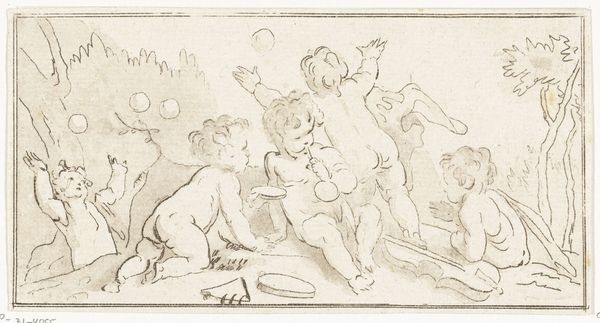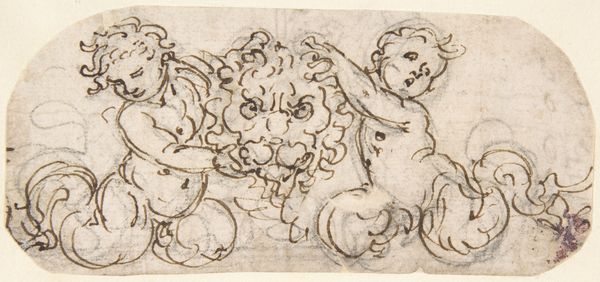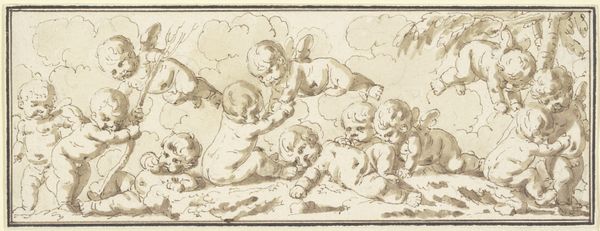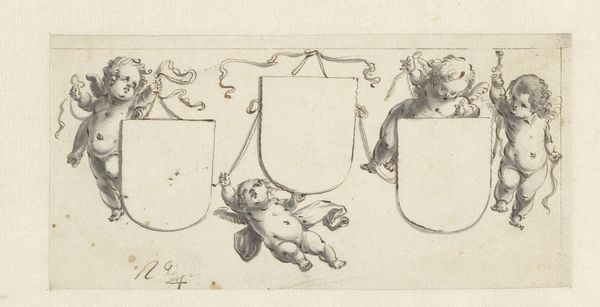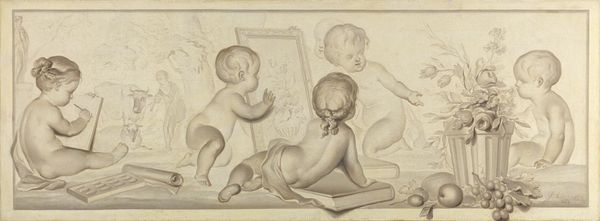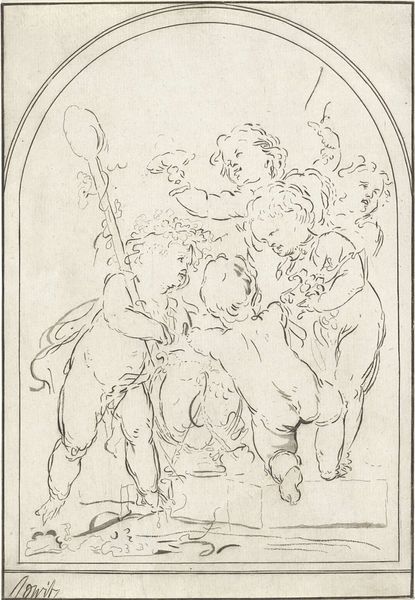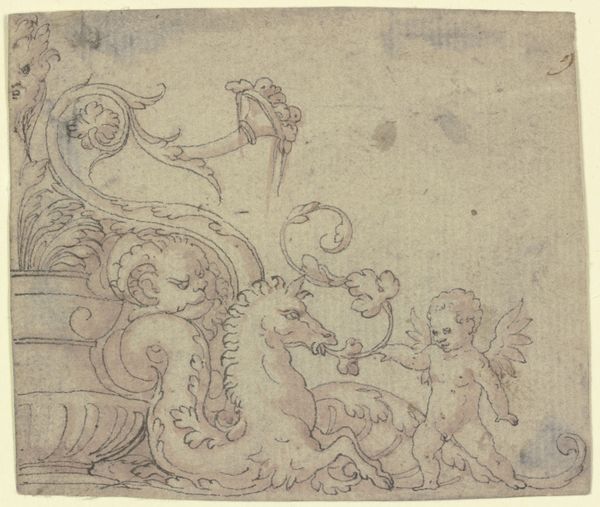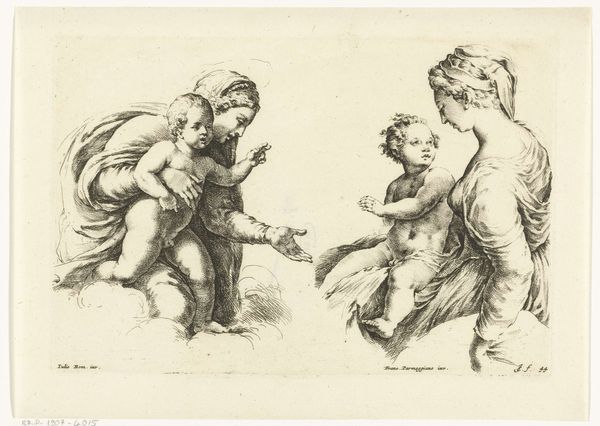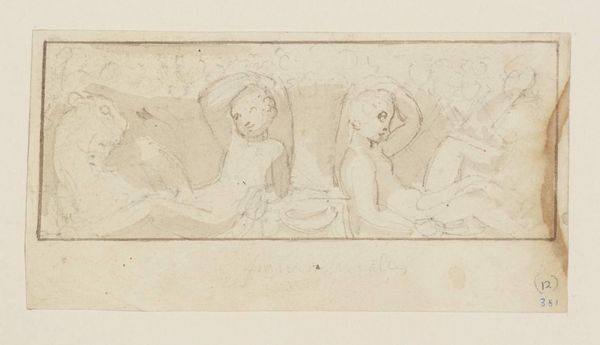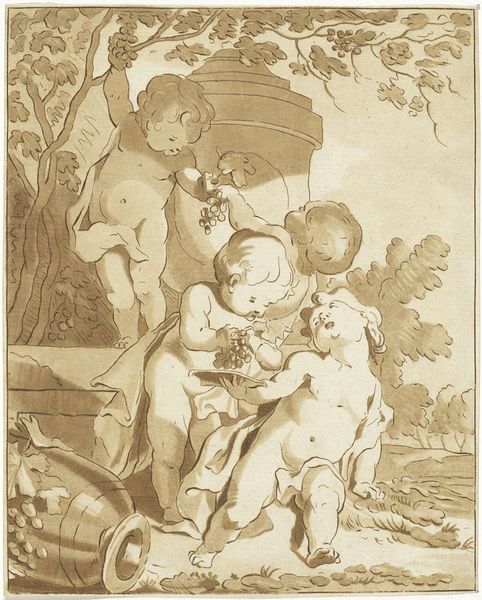
Ontwerp voor een bovendeurstuk met musicerende putti c. 1752 - 1819
0:00
0:00
Dimensions: height 123 mm, width 198 mm
Copyright: Rijks Museum: Open Domain
Curator: Before us is Jurriaan Andriessen's "Design for an Overdoor with Music-Making Putti," likely created sometime between 1752 and 1819, using ink and drawing techniques. Editor: What strikes me immediately is the playfulness and lightness. The monochrome ink gives it a certain ethereal quality, doesn't it? The forms are loose and flowing. Curator: Indeed. Considering its purpose as an overdoor piece, that lightness likely served to elevate the room's atmosphere. And Andriessen came from a family deeply involved in decorative painting, working extensively with wallpaper and room decoration. Editor: The putti are fascinating. Their instruments, their gestures – it all evokes classical themes of music and harmony. A reminder of order and beauty, maybe? Curator: Or even perhaps, the instruments symbolize education, cultivation. Music as a civilizing force during this period. It would have also certainly impacted on those making the art, where there might be an inter generational passing of this type of artisanship and materials between family members. Editor: And the fact that it is a design is significant. We see a drawing which offers a blueprint. We can imagine it rendered into a grander more physical decorative construction made for a private home, likely commissioned by affluent clients for this kind of ornamental work. Curator: Absolutely. The labor, and the social structures it required, from acquiring materials to paying artisans, highlights the economics interwoven into artistic creation and its consumption. These commissions sustained artists like Andriessen, whose practices was fundamentally integrated in commercial and domestic processes and traditions. Editor: Seeing this sketch as a kind of preparatory visual note really brings into perspective both the material work required to convert it into the more tangible artwork and how Andriessen was approaching the relationship between symbols, art, and social hierarchies. Curator: Exactly. Understanding Andriessen's place within a network of makers and consumers alters how we appreciate these artifacts and also reveals the conditions that enable these artists and these designs to emerge in the first place. Editor: Reflecting on the social and symbolic interplay reveals layers within what seemed at first like a decorative, innocent scene. It offers a complex tapestry to unravel and think about.
Comments
No comments
Be the first to comment and join the conversation on the ultimate creative platform.

